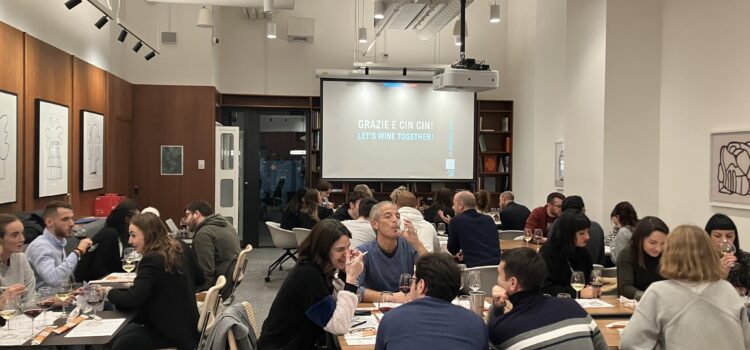Tasting a wine by covering the label, the so-called blind tasting, is a typical practice in international sommelier competitions to judge a wine without being influenced by a prestigious name, a beautiful label or a previously acquired bias. It is the perfect way to taste a wine without any kind of conditioning.
In a blind tasting, you have to concentrate hard to decipher the mysterious wine in the glass: you know nothing about its origin, its history, its grape varieties, its terroir or its winery technique. It is very exciting, the senses become heightened, and you have to rely on your judgment to recognize the wines' organoleptic profile.
What tools or knowledge are needed to participate in a tasting?
The type of tasting does not change the basic technique. It is necessary to ione non cambia la tecnica di base. know the ABC of professional tasting. We talk about the 4 phases: visual, olfactory, gustatory and retro-olfactory. Everyone has the necessary skills to taste, but first you need an introduction to the art of wine tasting, then you need dedication, practice and olfactory memory.
Now we come to team building
The activity starts with a training session that teaches not only theory but also practical application together with the trainer (professional sommelier). The objective is to interpret well our tactile perceptions (such as astringency, salivation, temperature, texture...).
After this introduction (an experience we can take home and perfect over time), the team building begins.
Teamwork becomes key
Depending on the formula chosen (and the wines to be tasted), each group is given a sheet with the checks to be made and the parameters to be recognised, such as colour, perfumes and aromas (to arrive at a judgement on the country or region of origin, grape variety(s), alcoholic strength, vintage, price range, vinification...).
Our five senses are the coordinates with which we establish relationships with the world. We start the activity in a joyful and playful way: each team member is valuable because our senses are developed differently, so it is important that we can compare and decide together. Someone has a more sensitive sense of smell, someone else has a more pronounced taste, someone has more field experience or a higher olfactory memory.
The team that achieves the final goal and the highest score wins.
Sensory teambuilding represents a true training path from which each participant can draw concrete personal growth. A path capable of going beyond the sensory perception from which it starts, because it aims to strengthen the relationship, trust and cohesion between colleagues, paving the way for the correct application of decision-making techniques
One must be able to share tasks (leadership) and use every resource to achieve the final goal. The experience ends with the awarding of the winning team (who receive a prize).
